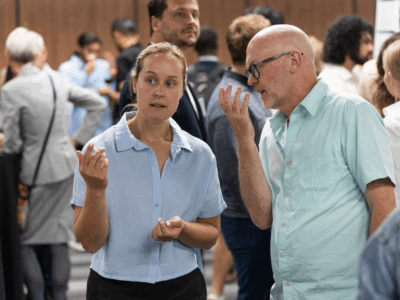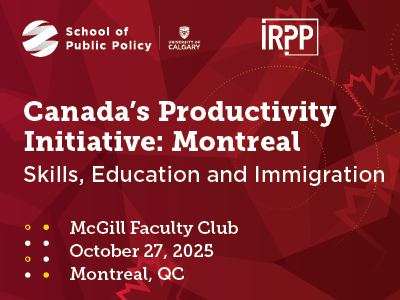SEDV’s Interdisciplinary Path to Energy Innovation

On a career path that has already taken her around the world, Caroline Bartlett sees the Master’s degree from the Sustainable Energy Development program at the School of Public Policy as a bridge.
For Bartlett, the program known by the acronym SEDV, is a connection between policy and technology as well as curiosity and application.
Her capstone project in the 16-month program explored how Alberta could harness waste heat generated by the growing number of energy-intensive data centres in the province. For Bartlett it reflects the program’s commitment to equipping students to tackle complex, real-world energy challenges with creativity and rigor.
Bartlett grew up in London, Ont., and was introduced to the world of climate and energy policy in her undergraduate degree in environmental policy at prestigious Middlebury College in Vermont. After graduation, she worked in Boston’s electricity sector, then moved west to Utah during the pandemic to join a multinational business development firm. She gained a global perspective on energy markets, collaborating with colleagues from around the world before her career in electricity took her to New Zealand.
Seeking to add more technical skills to her policy background, Bartlett began exploring graduate programs across Canada and the United States and the Master of Science for the SEDV program stood out for its interdisciplinary approach and openness to students from a variety of fields.
“SEDV is geared towards people,” Bartlett said. “The other programs I looked at seemed geared towards people already in the technical fields. SEDV stood out as a program that accepted students who came from anywhere and could help you gain the skills you wanted.”
Turning Heat Into Opportunity
Her capstone project took a similarly winding path. Bartlett initially set out to compare different data centre cooling systems, but she soon found the topic too technically specialized. That challenge inspired a new question: What if waste heat wasn’t waste at all, but a renewable resource?
Through the systems-level thinking encouraged in the SEDV program, she discovered data centers are not energy consumers but rather energy converters. They transform massive amounts of electricity into computing power, producing a large amount of heat that is typically released into the atmosphere.
“Waste heat is incorrectly named,” she said. “Waste heat is just heat. It can be used again. There is a huge opportunity to capture and reuse this heat, rather than discard it.”
Bartlett acknowledged she faced challenges within her capstone project. Academic research, such as a capstone project, is an iterative process, but Bartlett said guidance from her faculty advisors helped her stay focused.
“They’d remind me that I couldn’t do it all,” she said. “That there was an importance and benefit to staying focused on the right target.”
Charting Your Own SEDV Journey
Bartlett encourages future SEDV students to embrace the program’s breadth and dive deeply into topics that spark their curiosity. She also offered advice on the capstone project.
“Start early and research the topic you think you might be interested in for a couple of weeks because you won’t know where the project is going until it starts,” she explained. “Investing that time upfront pays off significantly in the long run.”
Working on the capstone allowed Bartlett to apply classroom theory to a real-world issue. Helping her learn to navigate uncertainty and make progress even when all the data isn’t available, continues to influence how she approaches energy challenges.
“The SEDV program helped me connect ideas to action,” she said. “It taught me to see possibility where others might see limits, whether that’s in waste heat or in my own career.”


